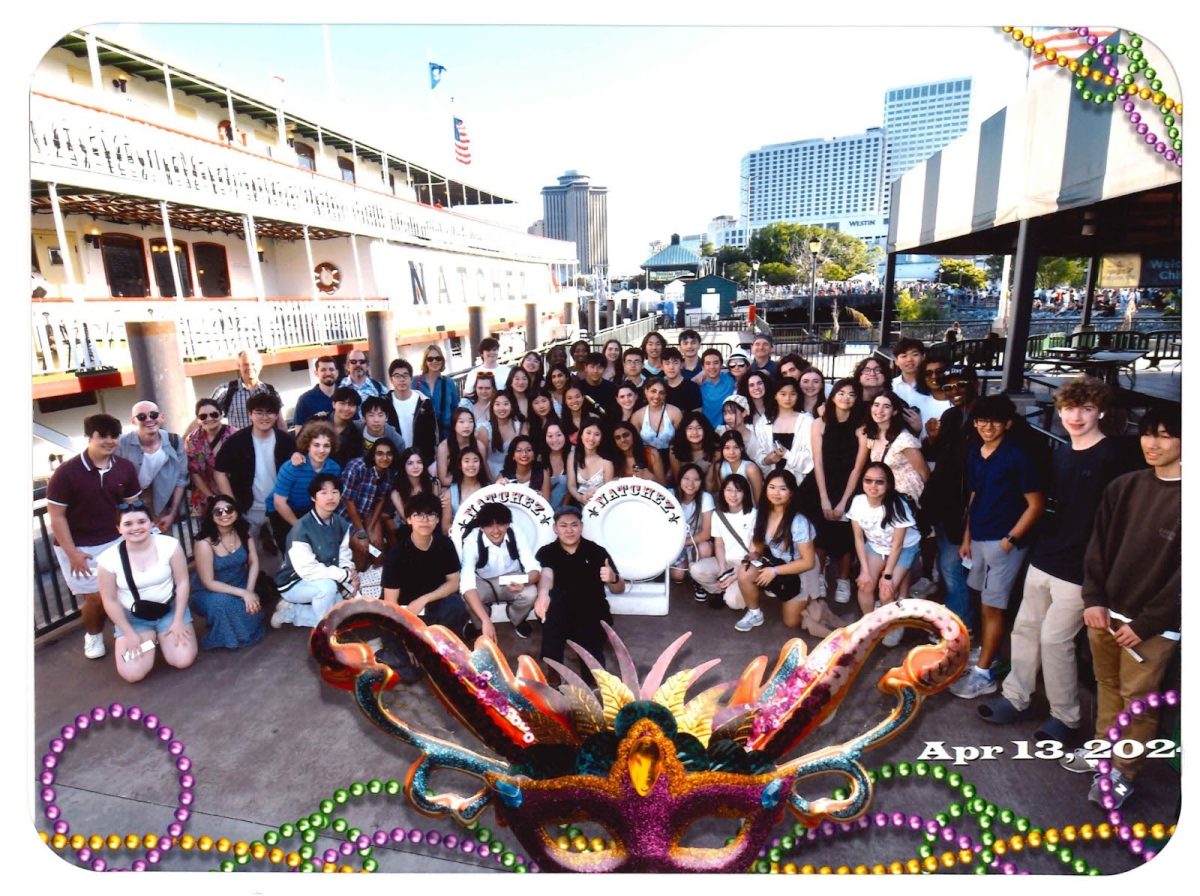The Next Big Thing: the Metaverse
May 24, 2022
In the early twenty-first century, tech innovation has cruised forward at full speed under the guidance of Silicon Valley and tech visionaries like Elon Musk, Jack Ma, and Steve Jobs. After the initial craze over smartphones and social media, innovation has slowed for companies like Apple and Facebook. Tech companies are constantly on the prowl searching for the next groundbreaking advancement: something totally disruptive, something to buzz about, to plan and build and debate. The world craves novelty. As a result, the next revolution lurks just beyond the horizon: the Metaverse.
Internet critics today accuse the younger generation of online obsession, of living in a virtual cloud rather than reality. Metaverse living would further mesh the two worlds, blurring the line between virtual and physical. In Greek, the root “meta” means beyond, or transcendence, suggesting that perhaps this new Metaverse would transcend the limits of the physical world, opening up wholly new, unseen possibilities.
Life in the Metaverse will likely involve some mixture of virtual reality and augmented reality and would function similarly to today’s video games. Each user would have a customizable Metaverse avatar, through which they interact with each other in the virtual space. Whereas today, each video game operates separately from the others, and purchases made in one specific game stay in that game only, the interoperability of the Metaverse allows for the movement of goods between different platforms. Everything would be connected in the Metaverse, and real money purchases would buy goods that the user can take anywhere. This virtual world comes complete with its own economy and laws, closely simulating the real world.
Although the Metaverse only rose to mainstream popularity recently, philosophers, tech buffs, and science fiction writers alike have been developing the concept for decades. The origins of the Metaverse can be traced back to the 1984 sci-fi novel “Neuromancer” by William Gibson. Gibson builds a cyberspace virtual world, describing this early concept of the Metaverse as “consensual hallucination” with “unthinkable complexity. Lines of light ranged in the nonspace of the mind, clusters and constellations of data. Like city lights, receding.” Nearly a decade later, the author Neal Stephenson coined the term “Metaverse” in his sci-fi novel “Snow Crash.” Stephenson further develops the same cyberpunk world from Gibson’s novel, creating a dystopian world where the virtual world parallels the physical. In the decades since, numerous novels and movies have taken place in the Metaverse, as science fiction thinkers envision the future.
Tech giants Facebook and Microsoft have already forged forward into the Metaverse, seeking new avenues for profit and attempting to nab a head start in the race towards the future. Facebook recently rebranded itself as Meta, perhaps partially to distance the company from the myriad of antitrust lawsuits that weigh Facebook down, but also out of commitment to Zuckerberg’s vision of the Metaverse. Following in Facebook’s footsteps, Microsoft made its debut in the Meta world with its acquisition of the gaming giant Activision Blizzard Inc., which owns well-known games such as Overwatch, Call of Duty, Candy Crush, Warcraft, etc. This acquisition places Microsoft as the third largest gaming company in the world, and Microsoft claims that it creates “building blocks for the Metaverse.”
Fashion brands have also begun voyaging into the Metaverse, as sport apparel store Nike has teamed up with gaming company Roblox Corporation to create Nikeland, a new Metaverse gaming platform. Other well-known brands have laid the groundwork for future entry by claiming trademarks and patents in the Metaverse early on. Clothing brands Urban Outfitters, Ralph Lauren, and Abercrombie & Fitch have filed for trademark rights for virtual Metaverse stores. Other big names such as Walmart, Gap, Under Armour, and Adidas are selling their own NFTs, which are likely to become the Metaverse currency. NFTs may soon become commonplace in the fashion industry as they provide a more secure method of authenticating luxury products.
Meta and Microsoft have kick-started a new era of Metaverse technology development, sparking the rise of a new crop of Silicon Valley startups dedicated to making the Metaverse a reality. Microsoft has promised the release of new Metaverse software features as early as 2022, while Meta’s Mark Zuckerberg aims to reach 1 billion Metaverse platform users by 2031. Progress will likely be stalled by the enormous cost of research and development. As Lakhi Raju ’24 says, “Our [current] pace of creating new technology makes me believe that a metaverse can be possible in the future, but I think it will be a while before our generation experiences it.” This obstacle has already surfaced in Meta’s weak first-quarter revenue. This loss frightened investors, who immediately pulled out. On Thursday, Meta’s stock dropped by 26% in the largest one-day decline ever, costing the company $237.6 billion.
A completely new domain such as the Metaverse requires laws and restrictions before it can be inhabited. Dalina Cao ’24 acknowledges the apparent “privacy and ethical concerns over data collection surrounding the usage of meta tech”, but ultimately concludes, “I don’t think the development and exploration of the industry should completely cease. I think there just needs to be more transparency and accountability surrounding companies in the tech industry.” Along with transparency measures, the Metaverse will require its own criminal laws, safety conditions, and regulations.





































